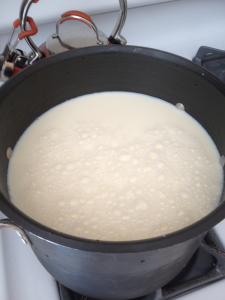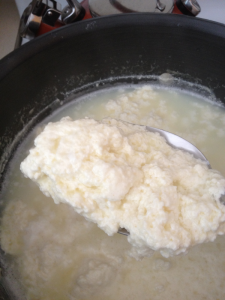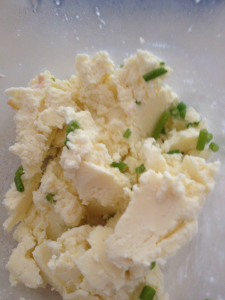I love cheese. There are so many varieties from the buttery soft Brie and Camembert to the crystallized aged Gouda. There are sharp cheeses and sweet cheeses and savory cheeses. I love eating cheese.
While I really enjoy eating cheese, the question now becomes, can I make cheese? I have a great source of grass-fed milk. I love the feeling of opening a jar of something I’ve preserved and tasting the fruits of my labor. I love sharing it as well. So can I make cheese? How hard can it be?
I’ve done some research. I know that making some cheeses is very easy and the biggest part of the whole thing is making sure your kitchen and the cheese making utensils are sterile. Others require time to cure, a few weeks for some, months for others. There are a lot of factors to making cheese.
But I want to do it. Its something I would love to have in my repertoire. I also want to know where my cheese comes from as well as my ingredients.
Cheese is at its most basic, a way of preserving milk. It’s a way of having milk and the goodness inherent in the milk available when the cows dry up in the winter. The fact that its ultra tasty and even better than milk in its raw form (which is hard for me to admit since raw milk is so very good) also factors into that equation.
So I bought a book, Artisan Cheese Making at Home: Techniques & Recipes for Mastering World-Class Cheeses. It has great detail in the making of cheeses and the recipes in the books are for the small cheese maker using 1 to 2 gallons of milk. There’s plenty of detail in the book and lots of recipes. From easy to make fresh cheeses to bloomy, mold covered cheeses. This book will keep me going for years.
The problem of course is that many of the cheeses need to age in very specific environments; different temperatures and humidities that I can’t replicate at this time. (Basically cheeses were aged in caves for a reason). So if I go down this road, I will need to invest in some equipment and find places for that equipment in my townhouse. I don’t want to do that yet until I actually figure out if this is something I want to do for years to come.
I’m starting with fresh cheeses, these are cheeses that can be eaten the day they are made. They are typically easy to make. I actually started with a Queso Blanco, a cheese that is simply curdled with cider vinegar and then salted and drained. I plan on making a cheese every few weeks, researching out what I will need for the cheese and then ordering the items I don’t have for that particular cheese (including the milk).
While I am using raw milk for my cheeses, the act of heating up the milk to specific temperatures and holding the milk at those temperatures for specific periods of time effectively pasteurizes the milk in some instances. Queso Blanco is one of those.
The steps were:

Heating the milk
- Heat the milk over 20-30 minutes to 195. It’s a slow rise in temperature to avoid scorching the milk.
- Turn off the heat, add cider vinegar to the milk and cover it for 10 minutes

Curds and Whey
- Scoop the curds into cheese cloth, salt it and let it drain

Drain the Curds
- Let it drain over a container for a few hours

The Finished Product
- Serve
Queso Blanco doesn’t melt well, which makes it great for omelettes, I also added some into a bunch of deviled eggs that I made for a party. It stores for about a week. I ended up adding some chives to the cheese when I stored it. 1 gallon of milk made about a pound of cheese.
This one was pretty easy to do and I’m sure that the next few will also be easy. After that I’ve got to figure out what I want to make. Something that only takes a few weeks to ripen would be good. Any suggestions?
Related articles





Ricotta salata is easy and yummy.
I’ve been making cheeses for a few years now. I purchased a second hand fridge and then purchased a thermostat that you plug into the wall and then put a probe in the fridge. This thermostat lets you keep your fridge the temp. you want. I keep mine at 55 for aging. I wanted extra shelves in there so I purchased some plastic coated wire shelving and cut it to size. My fridge now has six shelves for aging cheeses. I have a bowl of water in the bottom to help keep the humidity high. There is nothing like a good home made colby or cheddar or gouda.
Best of luck with your cheese making endeavors
Thank you.
Do you have a link to the thermostat you use (or one like it?). That’s one of the larger purchases I wanted to put off until I was sure I was going to continue making cheese.
check out new England cheese. http://www.cheesemaking.com/store/p/93-Refrigerator-Thermostat.html
[…] Starting to Make Cheese (healthyfoodnaturally.com) […]